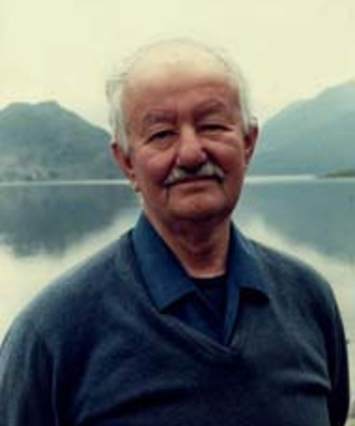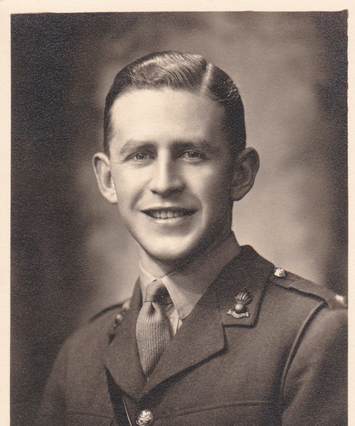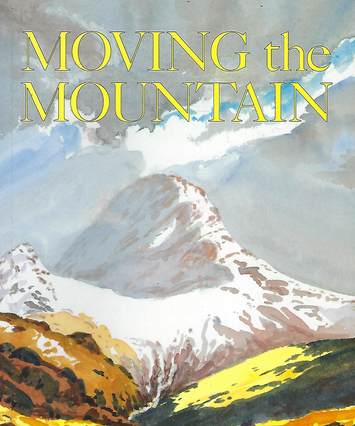The English Lakeland artist William Heaton Cooper enjoys taking risks. When two friends asked him to take them rock-climbing climbing in 1923, he borrowed a length of cart rope and set out for a nearby crag - in spite of the fact that he had never climbed with a rope before. When he needed to get to Oxford in a hurry, 12 years later, he bought an Austin Seven for 6 pounds and learnt to drive on the way. And when it comes to painting, the excitement of watercolour beats oil any day. 'It's like diving rather than swimming,' he says.
While oil painters can return to their work time and again, touching up and adding new layers of colour, the essence of watercolour is speed - adding dry colour while the washes are still wet. 'The speed of painting gives dramatic feel to the subject,' tie says. 'You have to have the courage to let yourself go-to risk spoiling a beautiful piece of paper.' Now aged 84, his gambles have paid off. He is among Britain's best-loved and most successful living artists.
Heaton Cooper lives at the hub of the Lake District, in the village of Grasmere, home of the poet Wordsworth. He knows the area as well as anyone alive - through the boots of the walker and climber as well as the eyes of the artist. For hundreds of thousands of people, his paintings are the Lake District - capturing not just the landscape, but something of the 'spontaneous thrill' which he felt when painting it. His pictures, he says, 'are nearly always of places I have loved all my life'.
Over three million people visit the Lake District every year. Some gaze at the soaring mountains and glass-like lakes from tourist buses and potter around the picturesque villages, displaying a lack of initiative which Heaton Cooper describes as 'sad'. But thousands don their walking boots and brave the unpredictable weather on the fells. 'It's one part of England where people are still free to walk high up and see space and light,' he says. 'When you get up to 2,000 feet, it's almost like entering another dimension. It frees the mind and builds up the spiritual strength to live in the valleys.'
Like the early Chinese painters, Heaton Cooper sees landscape painting as a means of interpreting the divine spirit. 'I don't monkey around with the mountains,' he told a recent television interviewer. He knows the structure of the mountains intimately - for 40 years he illustrated all the climbing guides for the area. 'The design exists in the mountains,' he says. 'God designed them. My job is to reveal his work in a particularly thrilling part of the world.'
Heaton Cooper learnt to paint from his father, Alfred Heaton Cooper, who first made his name as the illustrator of WT Palmer's The English Lakes, published in 1905. With the proceeds he set up a studio in Coniston and fed his family by selling paintings of the area to tourists. So from an early age the mountains were not only his son's playground, but also his bread and butter.
The younger Heaton Cooper won a scholarship to the Royal Academy Schools of Painting in 1922, at the age of 19, and spent the next seven years in London and the south. In those days he painted figures and groups, at play or at work - in sharp contrast to the unpeopled landscapes for which he is now so well-known. Then, in 1929, Alfred died - just as his son was recovering from a near-fatal bout of pneumonia. Heaton Cooper abandoned his ambitions and returned to the Lakes to support his mother, sister and 'delightful deaf Norwegian aunt'. At the time, he resented the move. Today he sees it as part of the 'pattern' designed for him by a loving God - and not just because it led to material success. For his return to the Lakes was a step towards an even more important goal-which he describes as 'wholeness'.
'There's so much division in the world and within people too,' he explains. 'The wholeness of the person can be the key to the wholeness of the world.' The key to that wholeness, he believes, is faith.
He compares his contact with God with the faltering steps of a beginner learning to climb a mountain. Looking back, two 'revelations' stand out like cairns along his path. The first came when he was 17, perched halfway up Wansfell, looking across lake and valley towards the Coniston fells. Unable to capture the scene, he gave up painting and sat, watching the clouds. 'I watched the showers coming up from the sea and dropping on the hills and the water being taken down the stream back to the sea again,' he remembers. 'Something about this orderly cycle of the movement of water filled me with inexpressible wonder and delight. I knew then that there was a mind responsible for the design and creation of the universe, including myself.'
This experience of God in nature was 'thrilling', says Heaton Cooper, but not enough. A second landmark came when he was 31. Two close friends told him that they had embarked on an 'experiment' of giving their whole lives to God. They invited him to join them at a weekend in Kendal organized by the Oxford Group (later Moral Re-Armament). Instinctively Heaton Cooper knew that they had found something he needed. The struggle to support his relations had left him feeling like 'a mouse on a treadmill', with no life or prospects of his own. He felt he had missed his chance as a painter and that his relationships with his family and friends were a failure. He longed to make a new start - as long as God did not ask him to give up painting.
After two days of inner struggle, Heaton Cooper knew that any contract he made with God would have to be all or nothing. Characteristically, he took the plunge. 'It was as though a great weight had been lifted off me,' he says. 'I was aware of the presence and power and love of Christ.' As he made time each day to be silent with God, he began to look at his life in a new light - and to see how to put right the things which weighed on his conscience. As a result both his mother and his brother 'started life again' as he had done. He began to find that God could use him to help other people to find wholeness - and to see this as laying the foundations of a better world.
He wondered if he would ever pick up another brush. Then one morning he felt that God was telling him to go and paint in a certain place at a certain time. 'I realized that God had given me back my gift of painting to be used in his service.'
As a result of this experience, Heaton Cooper believes, his painting changed. 'Light began to predominate over darkness - it became almost the subject of my painting.' His themes remained the same - transfigured by a stronger purpose to express the wonder of God's creation, with the authority of firsthand experience.
In 1940, Heaton Cooper married the sculptor Ophelia Gordon Bell. A cast of her Virgin and Child stands in the church at Grasmere, where the poet William Wordsworth is buried. Over the next nine years they had four children. Today one son, Julian, is a successful painter in his own right and two out of seven grandchildren are taking up art. The family business in Grasmere now employs eight people framing and selling prints of Heaton Cooper's paintings and is run by his oldest son, John. 'We employ one of the best printers in Britain, Frank Peters, whose works are only a few miles away, in Kendal,' says Heaton Cooper. 'This enables the artists of our studio to check every colour of every print thoroughly and drastically.' Hence the quality which makes his prints so popular.
How much has the need to feed his family dictated the course of Heaton Cooper's work? 'It's obvious that it must have had a big influence,' he replies. 'All through I've tried to combine the two - to reveal the inner spirit of the landscape and at the same time to paint it in a recognizable way.' The tourists usually want a lake in the picture, but fortunately he loves painting lakes. 'Looking up Crummock Water is one of the happiest places I know in the world.'
If the essence of Heaton Cooper's technique is speed, the secret of success is thought. 'The older I get the more time I spend in thinking about a painting first,' he says. He takes the time to understand the anatomy of a mountain or the patterns into which rock throws running water and, over the generations, running water sculpts rock. Behind each picture lies a story - many of them told, alongside beautiful reproductions, in his autobiography Mountain Painter (Frank Peters Publishing, 1984).
From conception to maturity a painting can take him anything from two hours to years. 'I saw something on the lake shore here one evening. I hadn't got my paints with me, so I kept going back in the evening for four years until I saw the same effect again - only even better.' His patch is so small that he can wake up in the morning, look out of the window and decide where to go, drive and climb to his chosen spot, and get his painting done all in one day. Now he is older, he often sketches in the open and paints back in the studio - relying on a phenomenal colour memory which left the artist who accompanied me on this interview gasping.
His favourite painting - Dawn over the Scafell - is a supreme example of this talent. 'Years ago I was camping with Ophelia above Wasdale. At about half past four or five I went outside to see what the weather was doing. The clouds which had been on Scafell across the valley started to rise and turn away to the east. The dawn light just tinted one or two clouds as they were moving. All I did at the time was a pencil drawing, pure line, just shapes of mountains.'
Seven years later, after Ophelia's death in 1975, Heaton Cooper came upon the drawing and decided to see what he could do with it. 'It had been lying in my mind all those years. The actual painting came very easily. Probably that's the nearest I've been able to get to a painting of light breaking through darkness.'
Light means 'a tremendous lot' to Heaton Cooper, for he has also known darkness. Ophelia's death left him bereft and desolate. In 1986 he published a short book, Through Darkness to Light (Frank Peters Publishing, 1986), which tells the story of his fight against depression.
What keeps him going through the dark periods? 'Every morning I read from the Bible, usually some saying of Jesus, even if I don't feel inspired at the time. I write down any thoughts that come. I go to Church once a week. Talking to people who are also trying to listen to God and obey him can be a great help too. I find these things a sort of lifeline. I try to keep them going through any dark period - and certainly God tends to honour that and take me through to the other side of the darkness.'
Different angle
In his eighties, his enthusiasms continue and expand, lit by his deepest longing-to further God's kingdom on earth. Two years ago he was in Norway for the opening of his mother's childhood home as a folk museum. He has picked up an interest in Poland which stems from the war, when he took Polish airmen rock-climbing, and has entertained Cardinal Glemp on a visit to the Lake District as well as visiting Poland himself.
He is also a passionate conservationist. The threat to the environment, he believes, is 'one of the worst results of the vacuum that exists in people's hearts'. He has played his part in successful campaigns to protect Wastwater, Ennerdale Water and the Scottish mountain Creag Meagaidh from commercial exploitation.
Greatest of all these loves remains his first - the nature, history and people of the Lake District. A walk with him is an education - every stone and settlement has a history, reaching back beyond the present farmers, through the Vikings, to prehistoric man. 'All his concerns, his painting and his writing strike me as one whole,' says his friend and fellow-artist Ronald Mann. 'He regards them all as an application of his faith.'
Heaton Cooper was one of the first artists to paint the Lake District from the heights rather than the valleys. 'From below, the summit is often dwarfed by the lower hills,' he says. 'I always went up to see my beloved fells from a different angle.' Although he was once offered a chance to join an Everest expedition, he has never been tempted by the world's great peaks. 'I'd much rather take things at my own pace, have plenty of time to look round and express what I feel.'
Back in the concrete of the cities, spirits lifted by a reminder of the mountains hanging on the walls, few would regret his choice.






